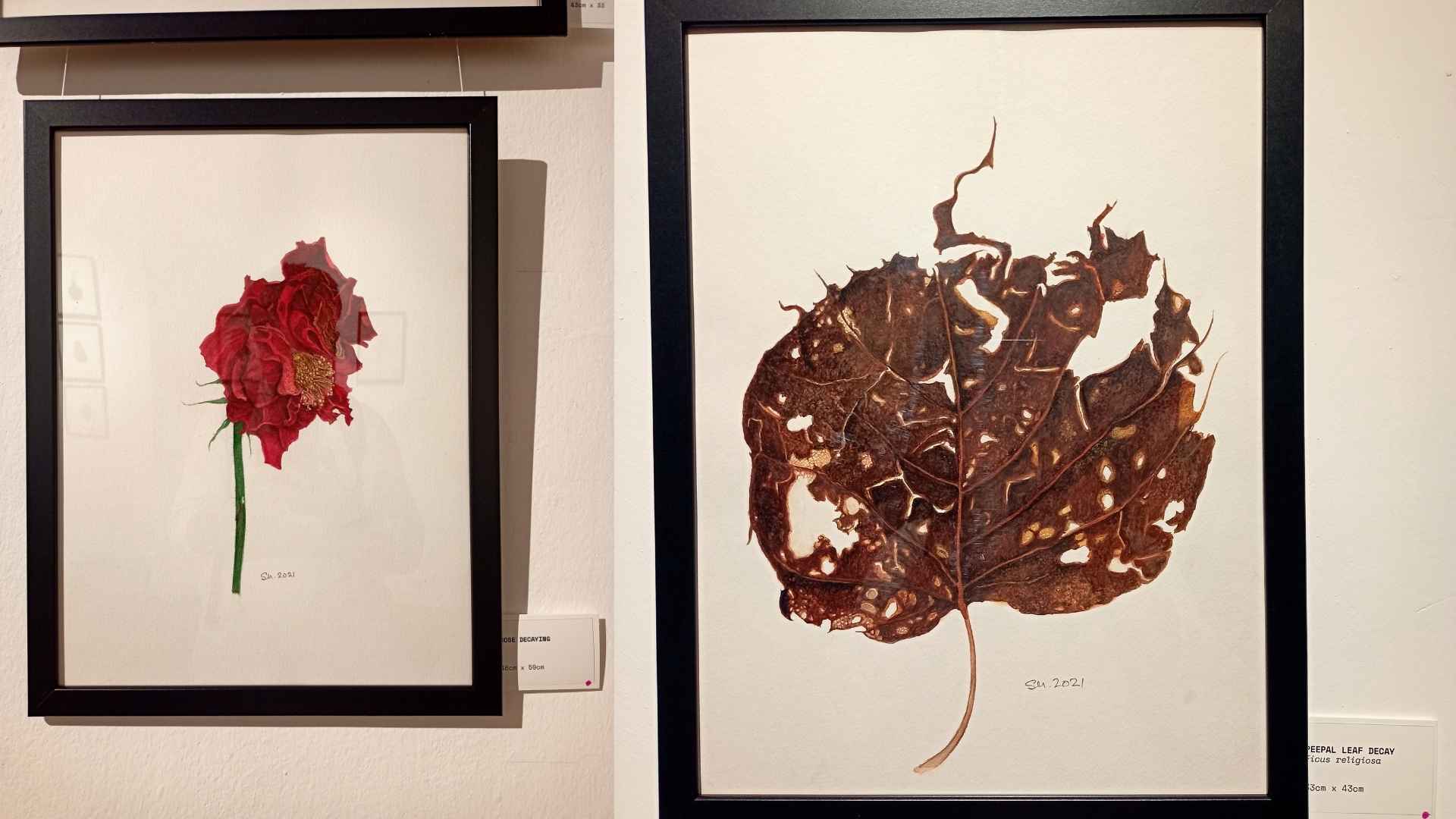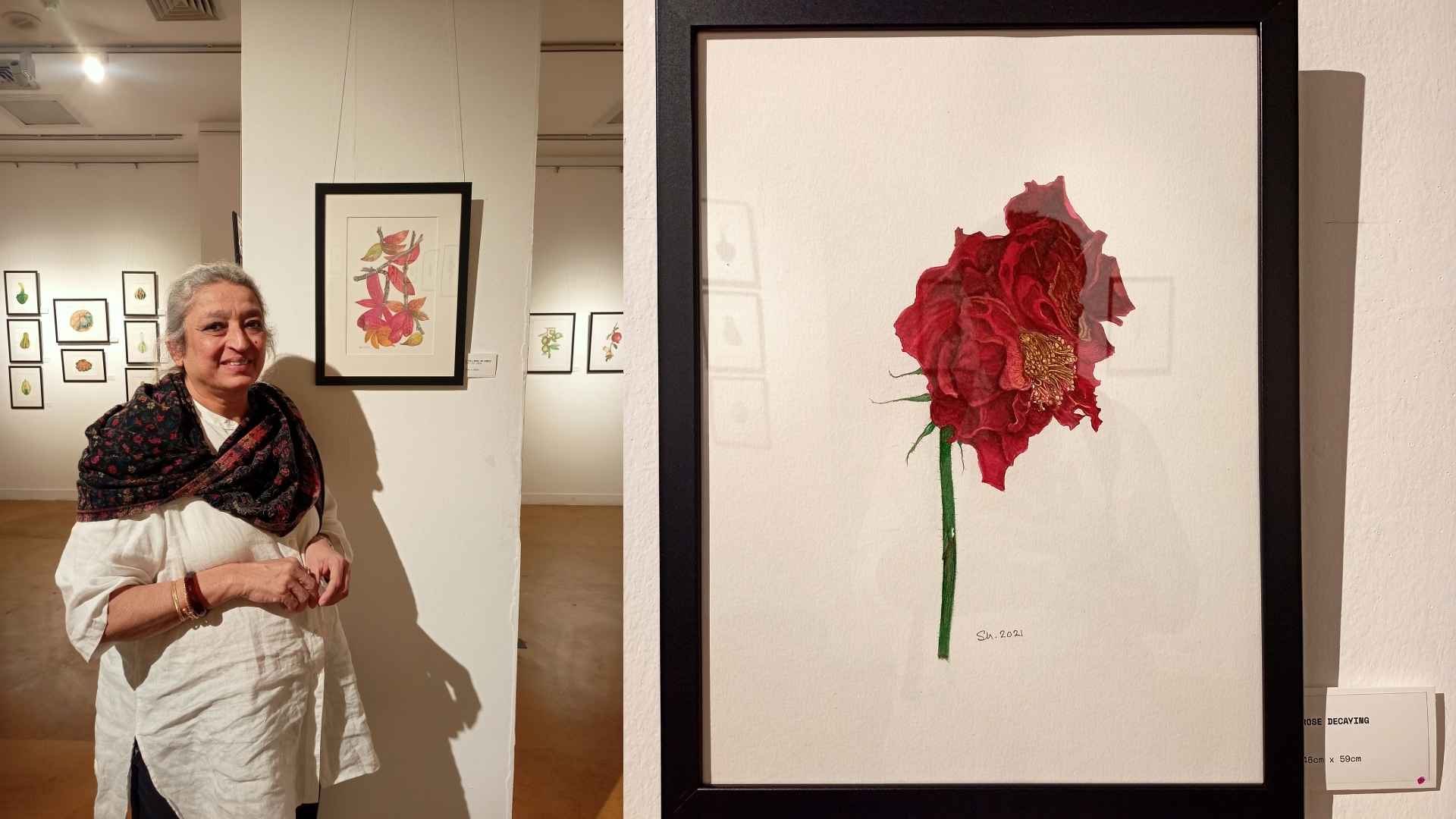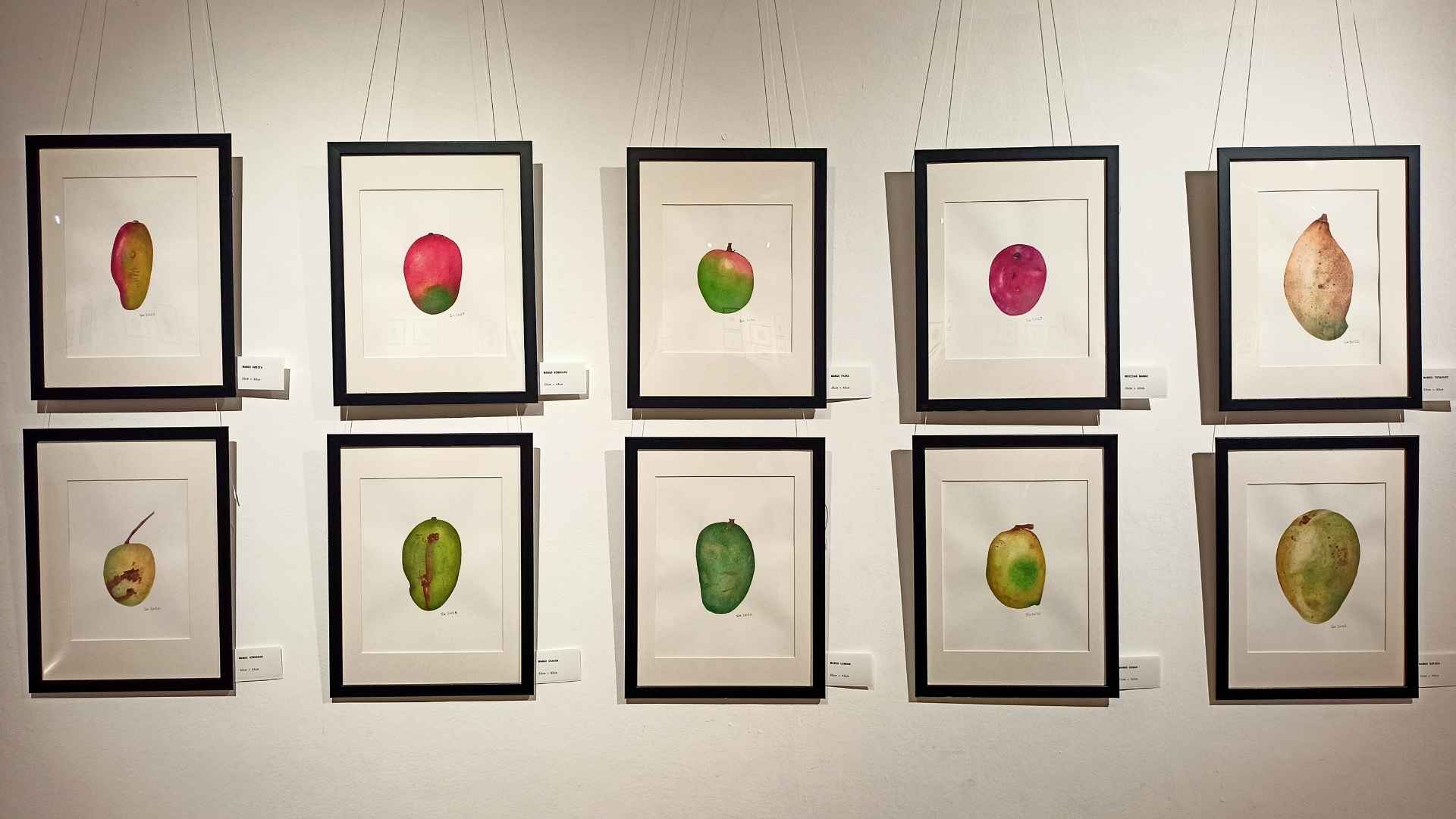This is the story of an artist who, after retiring, found herself deeply connecting with nature in a fascinating way. Today, I had the opportunity to visit the Indian Habitat Centre, where I was profoundly moved by the evocative collection Wabi-Sabi: The Secret Garden by Shefali Upadhyay. Her art explores the transient beauty of plants, emphasizing texture, form, and decay. Through her work, she strives to reveal the hidden perfection in imperfection—a concept that has earned her a place in the Botanical Art Worldwide 2025 India Exhibition.
Shefali ji’s work invites viewers to rethink the conventional ideals of beauty, which often revolve around perfection. Her paintings celebrate nature’s cycles, where decay is not a sign of death but a graceful part of the process. In our conversation, Shefali ji explained, “A fresh bud or flower is just as beautiful as one that is decaying. Nature is beautiful in every form, and we must not discard something simply because it is decaying.”
Wabi-Sabi: Beauty in Imperfection
The concept of wabi-sabi—finding beauty in imperfection—is at the heart of Shefali ji’s artistic philosophy. It mirrors nature itself, where nothing is truly perfect, yet everything holds beauty in its own right. In her artworks, even the most decayed specimens possess a haunting elegance. The delicate veins of a wilting petal or the subtle holes in
a leaf tell a story of time. Shefali ji’s approach encourages us to reconsider how we view aging, not just in nature but in ourselves. “I revel in adding stains and subtle holes,” she said, “for it is these flaws that create compelling compositions.” Her work speaks to a universal truth: beauty can be found in the quiet, often overlooked spaces of time.
A Personal Connection with Nature While Shefali ji’s art primarily focuses on botanical subjects, her connection to nature extends beyond flowers. Many of the flowers in her paintings once bloomed in her terrace garden. When they withered, she preserved them in her art. Her love for nature is profound, finding leaves more intriguing than flowers. One of her most striking series involved painting various mango varieties, capturing the individuality of each fruit. “Each mango holds a unique identity, much like a little human being,” she explained.
By painting them, Shefali ji connects with nature in a deeply personal way, reflecting the individuality of every living being. Influences That Shape the Vision When reflecting on her influences, Shefali ji shared the impact of British botanical artists. “One such artist, during a tutorial, taught me the difference between looking and truly seeing. Earlier, I would look at a flower as anyone else might, but now, with patience and time, I’ve learned to hear the stories a botanical subject has to tell. It’s about perception and how one chooses to nurture it,” she explained. Nature’s Lessons and the Call for Sustainability In India, as Shefali ji points out, children are increasingly disconnected from nature.
“We are losing touch with the fundamental lessons nature has to offer,” she lamented. After my conversation with her and observing her simple yet precise artworks, I feel that discussions around sustainability, degrowth, regrowth, and green growth—though ubiquitous—demand a more serious commitment.
Let’s resolve to treat the Earth with compassion and care. Instead of exploiting it, we need to relearn the innocence of a child and recognize our complete dependence on our mother planet.



















